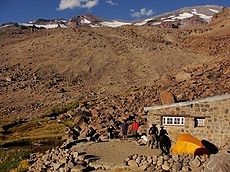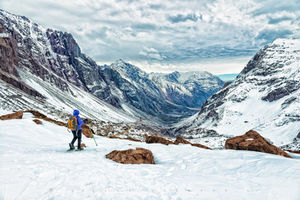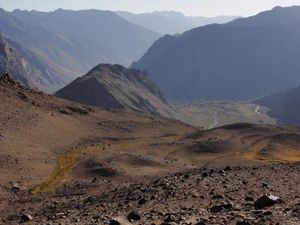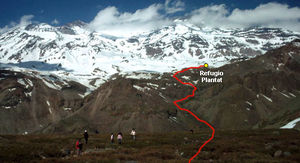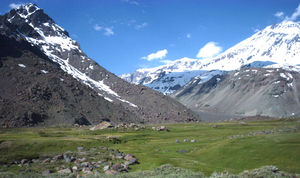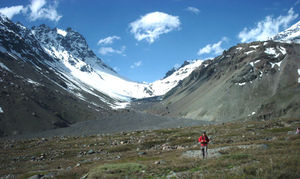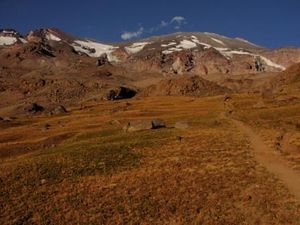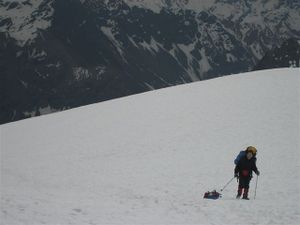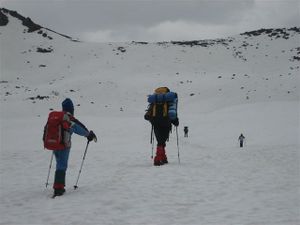Diferencia entre revisiones de «ENG:Refugio Plantat»
(Página creada con «{{Indexada}} {{Imperdonables|9}} category:KMZconTrack {{RutaForme |Actividad=Trekking |País=Chile |CiudadesChile=Santiago |VallesStgo=Valle Maipo |BellezaEscenica=Medi...») |
|||
| (No se muestran 2 ediciones intermedias del mismo usuario) | |||
| Línea 1: | Línea 1: | ||
{{Indexada}} | {{Indexada}} | ||
| − | |||
[[category:KMZconTrack]] | [[category:KMZconTrack]] | ||
{{RutaForme | {{RutaForme | ||
| Línea 23: | Línea 22: | ||
|Primer Autor=[[Usuario:Joaquin.baranao|Joaquín Barañao]] | |Primer Autor=[[Usuario:Joaquin.baranao|Joaquín Barañao]] | ||
|Imágen Principal=Refugio_Plantat_o_San_Jose.JPG | |Imágen Principal=Refugio_Plantat_o_San_Jose.JPG | ||
| − | |ComentariosImagen= | + | |ComentariosImagen=Plantat cabin. April 2010 |
|m=https://www.google.com/maps/d/u/0/embed?mid=1-QBX5YZSUE35md39SH2isd37SLTAYw0k | |m=https://www.google.com/maps/d/u/0/embed?mid=1-QBX5YZSUE35md39SH2isd37SLTAYw0k | ||
|KMLZ=Refugio_Plantat.kmz | |KMLZ=Refugio_Plantat.kmz | ||
|TipoDeMap=hybrid | |TipoDeMap=hybrid | ||
| + | |Comentarios Mapa=Trek to Refugio Plantat | ||
}} | }} | ||
[[File:Plantat.jpg|thumb|Plantat Cabin. November 2004]] | [[File:Plantat.jpg|thumb|Plantat Cabin. November 2004]] | ||
| Línea 35: | Línea 35: | ||
[[Archivo:Mapa_plantat.jpg|thumb| La Engorda Valley, at the skirts of the San José Volcano, April 2004. The trail climbs at the right of the ravine to get to Plantat]] | [[Archivo:Mapa_plantat.jpg|thumb| La Engorda Valley, at the skirts of the San José Volcano, April 2004. The trail climbs at the right of the ravine to get to Plantat]] | ||
[[File:Valle de la Engorda.jpg|thumb|Marmolejo valley from La Engorda. November 04.]] | [[File:Valle de la Engorda.jpg|thumb|Marmolejo valley from La Engorda. November 04.]] | ||
| − | [[File:refugio_plantat_7.jpg|thumb| Marmolejo valley from La Engorda. November 04. | + | [[File:refugio_plantat_7.jpg|thumb| Marmolejo valley from La Engorda. November 04.]] |
[[File:refugio_plantat_4.jpg|thumb|Arriving to Plantat, looking northwest. Behind [[Cerro Arenas|Arenas]] and [[Cerro Placas|Placas]].]] | [[File:refugio_plantat_4.jpg|thumb|Arriving to Plantat, looking northwest. Behind [[Cerro Arenas|Arenas]] and [[Cerro Placas|Placas]].]] | ||
[[Archivo:Parte_Final_al_Plantat.JPG|thumb| Arriving to Plantat]] | [[Archivo:Parte_Final_al_Plantat.JPG|thumb| Arriving to Plantat]] | ||
| Línea 45: | Línea 45: | ||
==Route== | ==Route== | ||
[[Archivo:Perfil_refugio_Plantat.png|thumb|center|750px|Profile of the walk to Plantat]] | [[Archivo:Perfil_refugio_Plantat.png|thumb|center|750px|Profile of the walk to Plantat]] | ||
| − | {{Cabrerio | + | {{Cabrerio to Plantat}} |
Plantat corresponds also to the first stage of the climb of [[ENG:Volcán San José|Volcán San José]]. | Plantat corresponds also to the first stage of the climb of [[ENG:Volcán San José|Volcán San José]]. | ||
===Refugio Plantat - Mirador del San José=== | ===Refugio Plantat - Mirador del San José=== | ||
'''1 hour, one way''' | '''1 hour, one way''' | ||
If there is some time to spare, it’s advisable to carry on hiking along the same path to reach, after an ascent of about one hour, to the viewpoint of Volcán San José. The trail is well marked, as it used by the climbers on their way to the summit. | If there is some time to spare, it’s advisable to carry on hiking along the same path to reach, after an ascent of about one hour, to the viewpoint of Volcán San José. The trail is well marked, as it used by the climbers on their way to the summit. | ||
| + | |||
Immediately after the cabin the path starts to climb close to the stream that feeds Plantat. After two minutes it separates from the stream to continue on a slope. Half an hour later, after 500 meters, a flat area is reached, easily distinguishable by a memorial plaque dedicated to a tragedy that took place in the Northern Icefield of Patagonia. | Immediately after the cabin the path starts to climb close to the stream that feeds Plantat. After two minutes it separates from the stream to continue on a slope. Half an hour later, after 500 meters, a flat area is reached, easily distinguishable by a memorial plaque dedicated to a tragedy that took place in the Northern Icefield of Patagonia. | ||
| + | |||
The trail continues at the north of this little plain pointing to the volcano, following for a couple of minutes a gentle edge. Then, it crossed to the north of the slope and the inclination increases, to finally reach the edge that reveals the volcano in all its might. The area is recognizable by a hill of slabs right to the north [[:image:Morro de lajas.JPG|(see image)]]. Besides, the clear trail ends, and there are stone walls to protect from the wind. | The trail continues at the north of this little plain pointing to the volcano, following for a couple of minutes a gentle edge. Then, it crossed to the north of the slope and the inclination increases, to finally reach the edge that reveals the volcano in all its might. The area is recognizable by a hill of slabs right to the north [[:image:Morro de lajas.JPG|(see image)]]. Besides, the clear trail ends, and there are stone walls to protect from the wind. | ||
| + | |||
Fifteen minutes ahead, there is a cairn with a Chilean flag, although the view from there is rather the same. From the viewpoint ascend the hill of slabs to the north. That’s counterintuitive, as the natural choice would be to go on along the valley, flatter and easier. Once reaching the top (five minutes) the path that follows the edges is visible again. Ten minutes later, it leads to the cairn. | Fifteen minutes ahead, there is a cairn with a Chilean flag, although the view from there is rather the same. From the viewpoint ascend the hill of slabs to the north. That’s counterintuitive, as the natural choice would be to go on along the valley, flatter and easier. Once reaching the top (five minutes) the path that follows the edges is visible again. Ten minutes later, it leads to the cairn. | ||
===Expected time=== | ===Expected time=== | ||
Revisión actual del 18:35 11 feb 2019
|
|
| |||||||||||||||||||||||||||||||||||||||||||||
Season
- Trekking: From late October, when there is still some snow left, till the beginning of May. Ideal in November and December
- Randonee: Between mid June to August. Unless it has snowed recently, it’s very likely that skies will have to be carried the first half an hour or so.
Access
By car
From the intersection at las Vizcachas (Avenida Camilo Enríquez and Avenida Eyzaguirre, km 0), take the road G-25 towards Cajón del Maipo, and follow it until km 65.1 (asphalt ends in the km 66.3 just before Lo Valdés) where there is a bifurcation. To the left, it leads to Baños Morales along a dirt road, located on the other side of the El Volcán river. Between June and September this road might be closed if there have been recent snowstorms. You can check the road status with Carabineros at San Gabriel (+56228611008 y +56228612290) although their answers tend to be on the conservative side.. This will be the last place to resupply. Continue along the main road, without taking the detour to Baños Morales. 1.5 kms beyond that fork the mining settlement of Lo Valdés is reached. 6 kms ahead, having past a steep ascent with pavement in very poor condition (“Cuesta de los Afligidos”, or ascent of the afflicted), there is a bridge that crosses the river Colina. Just 120 meters after the bridge you will be in El Cabrerío ("the goat place"), distinguishable by a big boulder with a chimney on top. It’s the place to park
Public transport and hitchhiking
Public busses to Cajón del Maipo
- Public busses (subsidized): El Alfalfal – San José de Maipo; Baños Morales (Lo Valdés) – El Volcán – San José de Maipo and El Volcán–San José de Maipo cost CLP$1200 (US$ 1.2 as of November 2024). It can cost as little as $300 for shorter distances.
- Turmaipo: From October to January first, Saturdays, Sundays and holidays. Daily in January and February. Departures at 7:30 AM and from Baños Morales at 18:000. It departures from Terminal de Metrobuses Bellavista de la Florida, platform E, or from Las Mercedes (Puente Alto) around 7:50. In San José de Maipo at about 8:35, to finally reach Baños Morales around 10:15. CLP$8000 (US$ 8.3 as of November 2024) round trip to Baños Morales, cheaper for shorter distances. Phone: +56228424208, +56222830082, +56228611518, cell +56982896718
- Buses TurMarzur: Phone +56993357800
Private vans to Cajón del Maipo
- Turismontaña: +56991219203
- Baños Morales: CLP$10000 (US$ 10.4 as of November 2024) round trip, per person, $12000 if you return a different day.
- Embalse El Yeso: CLP$10000 (US$ 10.4 as of November 2024) per person
- Turismo Arpue: CLP$10000 (US$ 10.4 as of November 2024) per person. Bookings at least 24 hours in advnace +56222117165 - +56226818475 cel: +56999320108
Both companies depart from Baquedano Metro Station (red and green lines), at the side of Telefónica building. The departure is at 7:30, to reach Baños Morales at about 10:00.
Route
Three hours one way The trail begins by surrounding the Morro Negro (the Black Hill). For the first 240 meters, walk along the same road your were following, until you see the start of the trail to your right (the road goes to Glaciar del Morado. The path heads north in the middle of a field of big volcanic boulders. After half an hour of this rocky terrain the pleasant Valle de la Engorda (“Fattening Valley”, due to its role for cattle) will be reached. The majestic San José Volcano fills the background to the east.
There is a small bridge to cross the stream at the beginning of the valley, although it can be crossed by taking of the shoes at any point. Sadly, you will pass very close to the new facilities set up by the Alto Maipo hydroelectric power plant. After crossing several lesser streams and two kilometres from the beginning of the valley, the foot of the south ravine is reached (see image) (2615m). Take note that there is another ravine to the north. Do not walk into the ravine itself, instead go on eastward towards the volcano. The ascent begins at the side of a boulder.
From there, the trail is clear all the way to Plantat. The path zigzags along the steep slope and ascends rapidly, following a small water course, that must be crossed. At 2700m, the trail bends sharply to the north, to cross the water course again. Then it bends to the south and crosses the stream yet once again.
At 2887m, already far from the humid ravine, the path bends again to the north. You will have to walk in that direction along an area of low inclination, and cross the stream once more. After 600 meters of this rather flat terrain (see image) the trail, ascending along a grassy area, bends slowly but finally to the southeast. From this point, it’s 670 extra meters to the small but comfortable Plantat cabin (3130m), on the shores of the very water course we have been crossing all along. Plantat corresponds also to the first stage of the climb of Volcán San José.
Refugio Plantat - Mirador del San José
1 hour, one way If there is some time to spare, it’s advisable to carry on hiking along the same path to reach, after an ascent of about one hour, to the viewpoint of Volcán San José. The trail is well marked, as it used by the climbers on their way to the summit.
Immediately after the cabin the path starts to climb close to the stream that feeds Plantat. After two minutes it separates from the stream to continue on a slope. Half an hour later, after 500 meters, a flat area is reached, easily distinguishable by a memorial plaque dedicated to a tragedy that took place in the Northern Icefield of Patagonia.
The trail continues at the north of this little plain pointing to the volcano, following for a couple of minutes a gentle edge. Then, it crossed to the north of the slope and the inclination increases, to finally reach the edge that reveals the volcano in all its might. The area is recognizable by a hill of slabs right to the north (see image). Besides, the clear trail ends, and there are stone walls to protect from the wind.
Fifteen minutes ahead, there is a cairn with a Chilean flag, although the view from there is rather the same. From the viewpoint ascend the hill of slabs to the north. That’s counterintuitive, as the natural choice would be to go on along the valley, flatter and easier. Once reaching the top (five minutes) the path that follows the edges is visible again. Ten minutes later, it leads to the cairn.
Expected time
Consider three hours from El Cabrerio, and a little more than two hours on the way back.
Permits / fees
On occasions, there is people charging CLP$1000 (US$ 1 as of November 2024) per person at El Cabrerío. It’s not clear whether this fee is legal, but for such a small amount is better to avoid problems. Sometimes they charge CLP$3000 (US$ 3.1 as of November 2024) per vehicle to park there as well.
Note: This fee applies to La Engorda Valley, not to Arenas Valley (the realm of Glaciar del Morado and so many others).
Recommendations
- The Plantat cabin was built in 1937 by Enrique Plantat and his sister Elizabeth, modelled after its alpine counterparts, due to their love for skiing. When inaugurated it boasted running water and a chimney. Today is maintained by their descendants and the mountain community. Please help us preserve it.
Hiring horses and/or mules
Roberto Molina and Katerina Cáceres offer horses and mules, departing from Baños Morales: +56287100051, +56991667566. Consider about CLP$15000 (US$ 15.6 as of November 2024) per day per horse.
Photo gallery
Cerro Arenas from la Engorda. December 2014. By Jorge Alvarez Besa (@jorgealvarezbe)



